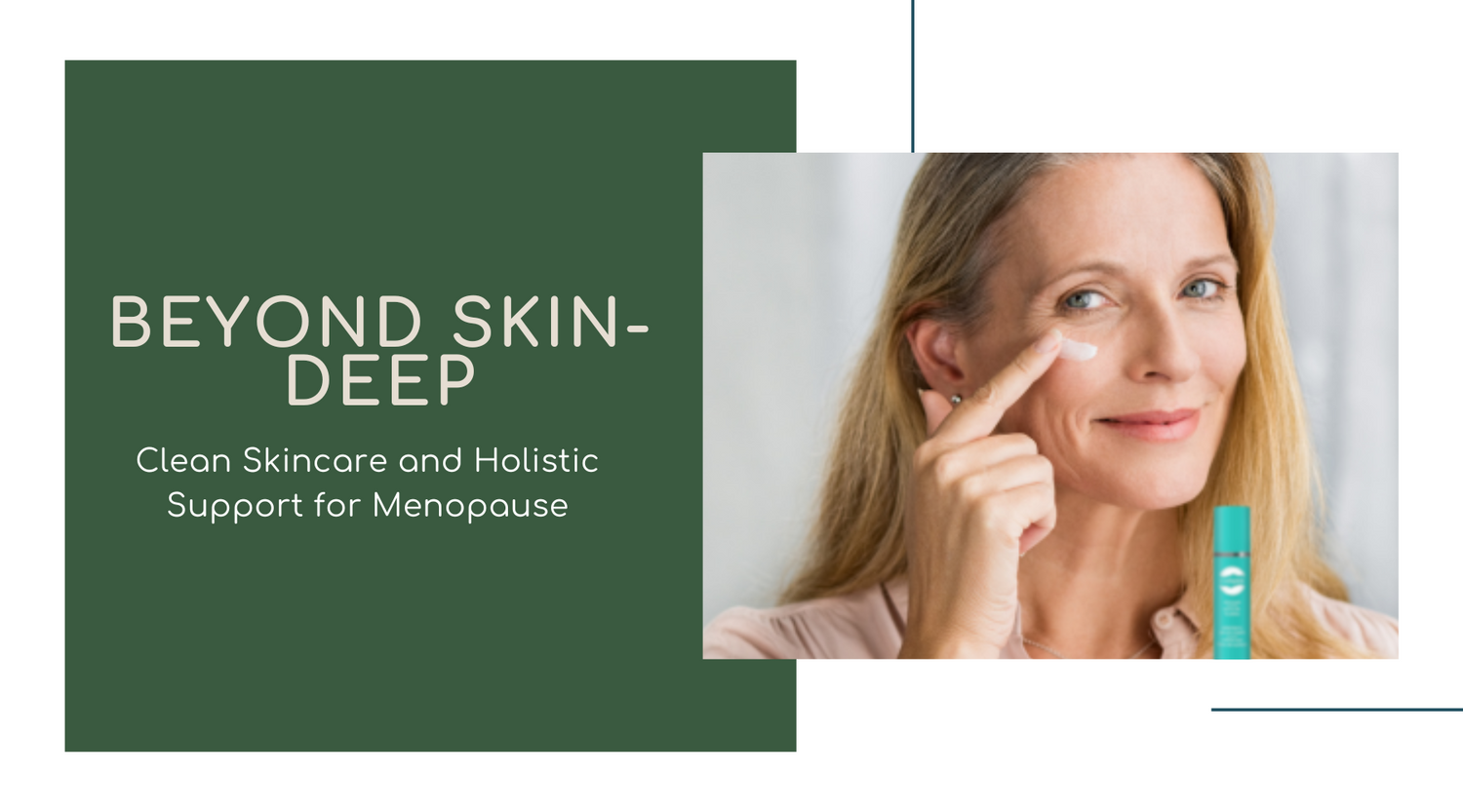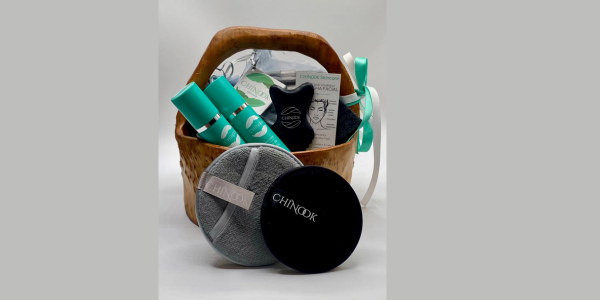Protecting your skin from UV damage is one of the most powerful ways to maintain a youthful, healthy complexion. But not all sunscreens are created equal. At Chinook Skincare, we believe informed choices lead to better skin outcomes, so let’s break down the differences between chemical and mineral sunscreens, what broad-spectrum really means, and how to make SPF work better for your skin.
Chemical Sunscreens
How They Work:
Chemical filters like avobenzone and octinoxate absorb UV rays and convert them into heat, which is then released from the skin. In doing so, they prevent UV damage, but this process can sometimes make your skin feel warmer, especially in direct sunlight. They tend to feel lightweight and blend easily without a visible cast.
Common Ingredients (and Why They Matter):
-
Avobenzone – One of the few chemical filters that provides broad-spectrum protection (UVA and UVB). However, it is photounstable, breaking down quickly in sunlight unless stabilized by other chemicals. It was included in the FDA’s 2020 study, which showed it is absorbed into the bloodstream and may linger for days. Degraded avobenzone can also produce free radicals, potentially contributing to oxidative stress and skin damage. Some lab studies raise concerns about hormone disruption, though more human research is needed.
-
Octinoxate – A UVB filter commonly used in facial sunscreens and SPF cosmetics. Although not included in the FDA’s 2020 absorption study, it has been shown in other research to be absorbed into the body, act as a potential endocrine disruptor, and contribute to coral reef bleaching. It also degrades in sunlight and may require chemical stabilizers to remain effective.
What the Research Shows:
The FDA's 2020 study found that several chemical UV filters — including avobenzone, oxybenzone, homosalate, octisalate, and octocrylene — can be absorbed into the bloodstream at levels exceeding safety thresholds. These chemicals remained in the blood for days and are still under review for long-term safety.
Potential Concerns:
-
Hormone disruption
-
Skin irritation or allergic reactions
-
Free radical formation when unstable ingredients degrade
-
Environmental toxicity, especially for coral reefs and marine ecosystems
Mineral Sunscreens
How They Work:
Mineral (or physical) sunscreens sit on top of the skin and reflect UV rays. They start working immediately and are ideal for sensitive or reactive skin types.
Key Ingredients:
-
Zinc Oxide – Offers true broad-spectrum protection (UVA and UVB)
-
Titanium Dioxide – Primarily protects against UVB and some UVA rays
Why We Recommend Them:
Mineral sunscreens are gentle, effective, and safer for long-term use, especially when formulated with non-nano zinc oxide. They are also more environmentally responsible and currently the only UV filters recognized as Generally Recognized as Safe and Effective (GRASE) by the FDA.
What Does “Broad-Spectrum” Mean?
Broad-spectrum sunscreens protect against both types of ultraviolet rays:
-
UVA (Aging): Penetrates deep into the skin, breaks down collagen, and accelerates wrinkles and pigmentation
-
UVB (Burning): Affects the skin’s surface, causes sunburn, and contributes to skin cancer
Always look for “broad-spectrum” on the label to ensure your skin is protected from both aging and burning rays.
Do Natural Oils Like Raspberry Seed Offer SPF?
Some plant oils, like raspberry seed and carrot seed, are often praised for natural UV protection. However, these claims are inconsistent and unregulated.
-
Raspberry Seed Oil – May offer UVB protection, but SPF values vary and are not tested to regulatory standards
-
Carrot Seed, Wheat Germ, Coconut Oils – Provide minimal protection and should never replace sunscreen
Bottom line: These oils are great for hydration and antioxidant support, but they are not reliable UV filters. They work best alongside a well-formulated sunscreen.
How and When to Apply Sunscreen
-
Use daily, year-round – UV rays are present even on cloudy days or during winter. They are stronger at high altitudes, such as here in Alberta
-
Reapply every 2 hours, or more often if sweating or swimming
-
Use water-resistant formulas for outdoor activities
-
Mineral sunscreens protect immediately; chemical sunscreens need 15 to 20 minutes to activate
What About Sunglasses?
While protecting your eyes from UV damage is important, there’s growing awareness around the benefits of brief morning sun exposure without sunglasses. Natural light entering the eyes helps regulate your circadian rhythm, influences hormone balance, and may even help stimulate your skin’s natural protective pigment, melanin.
A balanced approach: Spend 10 to 15 minutes in early morning sunlight without sunglasses to support your body’s natural rhythms (without looking directly at the sun). Then wear UV-blocking sunglasses during peak hours or whenever you’ll be outdoors for extended periods.
Check Your SPF Ingredients with the Yuka App
If you’re unsure about what’s in your sunscreen, the Yuka app is a helpful tool for checking ingredient safety. Simply scan the barcode to see how a product rates for health and environmental impact. For sensitive skin, look for sunscreens that score 85/100 or higher.
While Chinook Skincare doesn't make sunscreen, we believe in transparency and empowering you to make informed decisions about everything that touches your skin.
Make Sunscreen Work Better with the Right Prep
-
Sensitive skin? Choose mineral
-
Wearing makeup? Opt for a tinted mineral SPF to reduce white cast and improve blendability
-
Want smoother application and antioxidant support? Prep your skin properly
Pro Tip from Megan
Whether you're applying sunscreen to your face or body, start with a layer of antioxidant-rich plant oil or lightweight moisturizer. This helps your sunscreen spread more evenly, reduces white cast, and gives your skin an extra layer of defense against UV-induced oxidative stress.
The Chinook Skincare Two-Step Ritual is the perfect prep:
-
Superfruit Cleanser – Use as a gentle morning cleanse or as a hydrating leave-on serum. PLUS
-
Elderberry Serum Cream – Powered by elderberry seed oil, squalane, and plant-based antioxidants to nourish, calm, and protect your skin before applying SPF
Bonus tip: After a day in the sun, apply the Superfruit Mask as a cooling, restorative treatment. Formulated with Seabuckthorn fruit oil, it helps soothe inflammation, support skin repair, and restore hydration—perfect for post-sun recovery.
Final Thoughts
Sunscreen is essential, but understanding what’s in it—and how it works with your skin—makes all the difference. Choose what feels right for you, wear it consistently, and support it with nourishing, antioxidant-rich care.
Healthy, radiant skin starts with informed choices.





